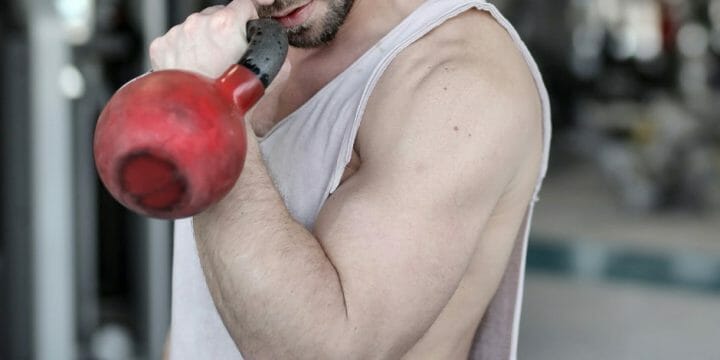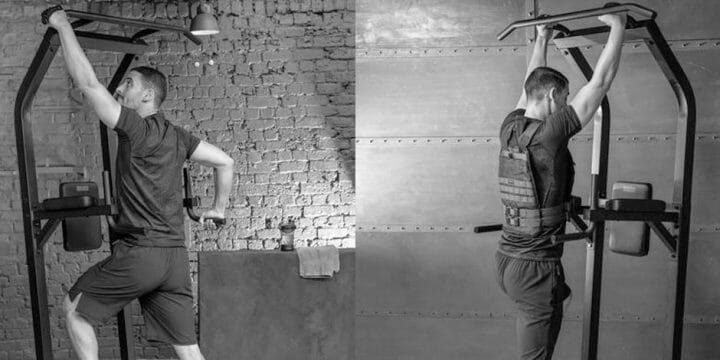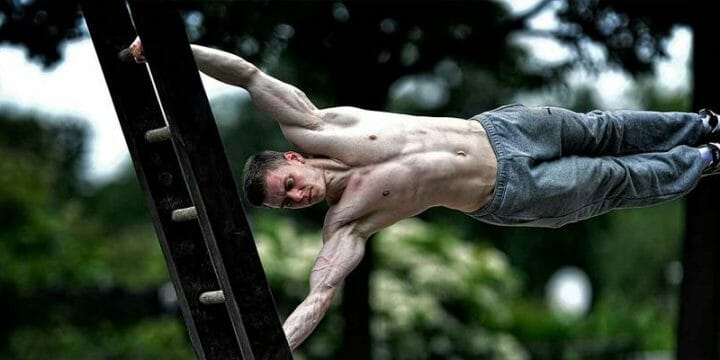The quadriceps may be considered the powerhouse of the lower body, but I consider the vastus medialis to be its prized gem. Targeted exercises can chisel the vastus medialis into a thing of beauty, enhancing your appearance and athletic ability.
I synthesized my experience with fitness clients, did thorough research, and consulted a few top trainers to come up with a list of the most effective exercises for engaging your vastus medialis.
These exercises will strengthen your knees and give you that coveted teardrop thigh muscle shape.
Quick Summary
- The ten best vastus medialis exercises include barbell squat, sumo deadlift, Bulgarian squat, lunges, step ups, squat hold, side lunge, close stance squat, heel-elevated squat, and squat jumps.
- The vastus medialis is a crucial part of the quadriceps that plays a key role in hip flexion, knee extension, and patella stabilization.
- Strengthening the vastus medialis, with a 36.7% reduced area in painful knees, can alleviate patellar tendonitis or runner's knee, as per the National Institute of Health.
- In my experience, focusing on the vastus medialis with specific exercises significantly improves knee health and contributes to a well-defined "teardrop" thigh muscle shape.
Best Vastus Medialis Exercises
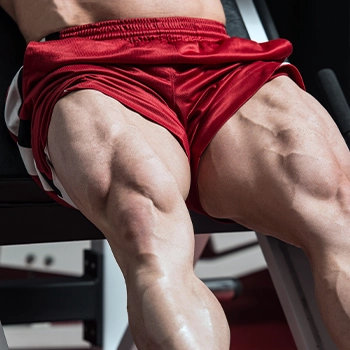
Before we jump into the exercises that engage the vastus medialis, let’s first quickly explain what this muscle is.
What Is Vastus Medialis?
Vastus medialis, or vastus medialis oblique (VMO), is one of four quadriceps femoris muscles in the front of the thigh. According to the National Institute of Health (NIH), it extends the leg at the knee joint and stabilizes the patella during movement [1].
Let’s get into the exercises.
Top 10 Vastus Medialis Exercises
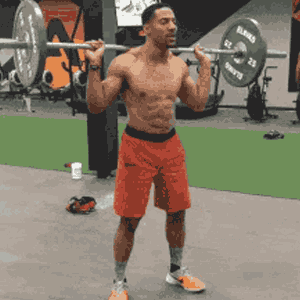
We consulted with fitness professionals and reviewed the scientific literature to find the ten most effective exercises for the VMO muscle.
1. Barbell Squat
This powerful exercise targets several muscle groups, including the trapezius, legs, and core, making it a full-body exercise.
The benefits of the exercise include increased strength, enhanced stability, and the development of a more muscular, defined body.
Follow these steps to perform it:
- Load a barbell onto a squat rack.
- Stand with your feet shoulder-width apart and grip the bar with both hands.
- Lift the barbell from the rack and place it across your shoulders.
- Lower your body into a squat position, keeping your back straight and core tight.
- Push through your heels and rise back up to the starting position.
Related: Best Power Racks on a Budget
2. Sumo Deadlift
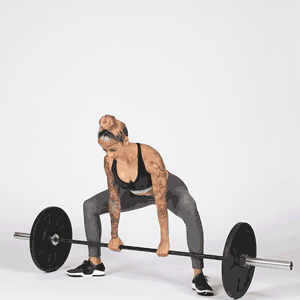
The sumo deadlift is a compound exercise that works the quadriceps, especially the vastus medialis muscle, hamstrings, glutes, lower back, and traps.
This exercise emphasizes the use of the legs and hips and is excellent for building strength and power in the lower body.
To perform the sumo deadlift:
- Approach the bar with your feet wider than shoulder-width apart and your toes pointed at a 45-degree angle.
- Position your shins close to the bar with your hips low, chest up, and back flat.
- Grip the barbell with your hands inside your knees and arms straight.
- Drive through your heels and stand up, keeping the barbell close to your body.
- Lower the barbell back down with control.
 3. Bulgarian Squat
3. Bulgarian Squat
This unilateral exercise isolates the glutes, quadriceps, and hamstrings, as well as the stabilizing muscles of the core. It can correct muscle imbalances and prevent knee instability by working each leg independently.
Here's how to perform the Bulgarian squat:
- Stand facing away from a bench or step with one foot elevated behind you.
- Hold a dumbbell in each hand for added resistance.
- Lower your body until your front thigh is parallel to the ground.
- Keep your chest upright throughout the movement.
- Push through your front heel to return to the starting position.
- Complete the desired number of reps before switching legs.
4. Lunges
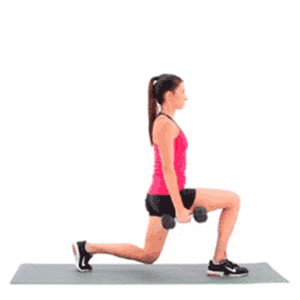
Lunges are a popular leg exercise that works the quads, hamstrings, glutes, and calves. They can be done with body weight or added resistance, making them suitable for all fitness levels.
To perform a lunge:
- Stand with feet hip-width apart.
- Take a step forward with your right foot, keeping the right knee above the ankle.
- Lower the left knee toward the floor, keeping the right knee bent at a 90-degree angle.
- Push through the right foot to stand back up.
- Repeat on the other side, alternating legs with each rep.
“VMO is trained most effectively when knees go over toes, OR when the knee is fully bent. How ironic that most of us totally AVOID those two positions.”
- James Thorpe, Master Fitness Instructor
 5. Step Ups
5. Step Ups
Step Ups are an excellent exercise to build strength, power, and endurance in your quadriceps, hamstrings, and glutes.
They improve balance and stability while engaging your core muscles and preventing knee pain.
To perform this exercise, follow these steps:
- Step up on a knee-high bench, keeping your knee above your ankle.
- Push yourself up onto the bench, lifting your opposite leg.
- Lower yourself back to the ground and repeat on the opposite leg.
- Complete three sets of 10–12 reps on both legs.
6. Squat Hold
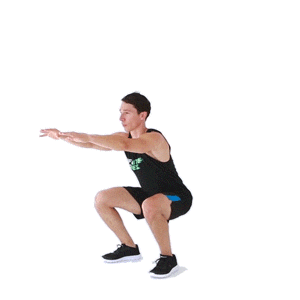
A squat hold, also known as a wall sit, is an isometric vastus medialis training exercise. It involves holding a static squat position with the back against a wall and thighs parallel to the ground.
To perform a squat hold:
- Stand with your back against a wall.
- Slowly slide your back down the wall until your thighs are parallel to the ground.
- Keep feet shoulder-width apart and knees in line with toes.
- Hold for 30 seconds or more while keeping your core tight and breathing steadily.
 7. Side Lunge
7. Side Lunge
The side lunge works the quadriceps, hamstrings, and glutes while also engaging the adductors and abductors. It requires stepping to the side and bending the knee of the stepping leg while keeping the other leg straight.
To perform the side lunge:
- Stand with feet shoulder-width apart and hands on hips.
- Step to the side with your right foot, keeping your left foot in place.
- Bend your right knee, keeping your left leg straight.
- Push through the right heel to return to the standing position.
8. Close Stance Squat

The close/narrow stance squat emphasizes the four quadriceps muscles more than a traditional squat, making it an effective way to build strength and muscle in the lower body.
Here's how to perform it:
- Stand with feet hip-width apart and toes forward.
- Bring your feet together and hold the barbell in front of your chest.
- Bend knees and lower into the squat with core engaged.
- Push through heels to return to starting position.
 9. Heel-Elevated Squat
9. Heel-Elevated Squat
Heel-elevated squats are a variation of the traditional squat performed by placing a weight plate under the heels and elevating them off the ground.
To perform the exercise:
- Set up a platform or weight plate under your heels.
- Stand with your feet flat and your toes pointing slightly outwards.
- Squat down, keeping your back straight and your weight in your heels.
- Pause briefly at the bottom of the squat before standing back up.
10. Squat Jumps
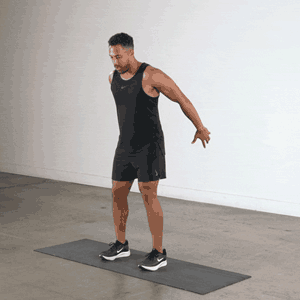
Squat jumps are a plyometric exercise that combines a squat and a jump to create a high-intensity movement.
This exercise builds explosive leg strength, improves cardiovascular endurance, and increases muscle coordination.
Here are the steps to perform a squat jump:
- Stand with feet shoulder-width apart.
- Crouch down, keeping back straight and knees behind toes.
- Jump as high as possible and land softly back into the crouch.
- Immediately jump again and repeat for desired reps.
Anatomy of the Quadriceps
The quadriceps femoris, or quads, is a mighty muscle group that dominates the front of the thigh.
It comprises four muscles: rectus femoris, vastus lateralis, vastus medialis, and vastus intermedius.
- Rectus femoris: This muscle extends the knee and flexes the hip.
- Vastus lateralis: This muscle extends the knee and stabilizes the hip joint.
- Vastus medialis: This muscle extends the knee and stabilizes the patella at the knee joint.
- Vastus intermedius: This muscle works with the other quadriceps muscles for knee extension.
“The quadriceps muscles have a significant impact on pelvic rotation (anterior), kneecap tracking, and knee positioning.”
- Dr. Jonathan Kuttner, Musculo-Skeletal Pain Specialist
The quads provide the foundation for power, knee stability, and movements like hip flexion and knee extension.
Benefits of Working the Vastus Medialis
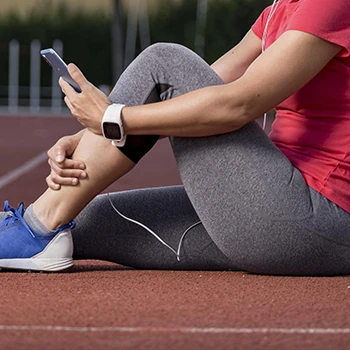
Engaging the vastus medialis produces a myriad of benefits.
I've found that focusing on the vastus medialis with clients significantly improves their knee strength and stability, which in turn enhances their athletic performance and overall mobility.
For those interested in targeting the lateral aspect of the thigh, the recommended vastus lateralis exercises can be beneficial.
According to NIH, strengthening this muscle can alleviate knee pain caused by conditions like patellar tendonitis or a runner’s knee [2].
Building a well-defined vastus medialis can also give you an aesthetically pleasing “teardrop” muscle shape inside your thigh.
Safety Precautions
I always emphasize the following safety precautions to my clients when performing vastus medialis exercises:
- Warm up before exercising to prevent injury.
- Start with lighter weights and gradually increase the resistance.
- Maintain form and avoid overextending your knee.
- Stop immediately if you experience sharp or shooting knee pain.
- Give your quads recovery time between workouts.
Enhancing Your Leg Workouts
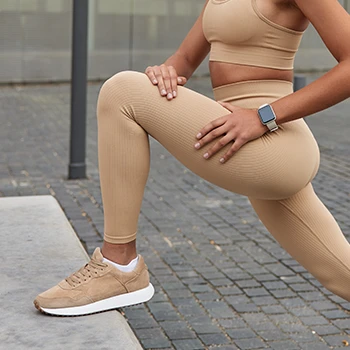
To enhance your workouts and achieve athletic legs, incorporate various exercises into your leg routine to target different muscle groups and prevent plateauing.
Work your flexor muscles through squats or deadlifts and extensor muscles on a leg extension machine.
Increase your weight or reps gradually to continue challenging your muscles and promoting growth.
Additionally, as per a study by NIH, incorporating compound leg movements like a split squat, lunge or leg press with proper foot placement can engage multiple muscle groups and promote functional strength [3].
Recovery plays a major role in leg training.
Nutritional Considerations for Muscle Development
To support the strengthening and growth of the vastus medialis focus on a balanced diet rich in protein, the building block of muscle.
- Include lean meats, fish, dairy, legumes, and plant-based proteins to ensure adequate amino acid intake for muscle repair and growth.
- Carbohydrates are also crucial for energy; opt for complex carbs like whole grains, fruits, and vegetables for sustained fuel.
- Healthy fats from sources like avocados, nuts, and olive oils are essential for hormone production and overall health.
- Stay hydrated, and consider taking a quality protein supplement to recover and help develop your legs especially after intense workouts targeting the vastus medialis.
FAQs
How Do You Isolate Vastus Medialis?
To isolate the vastus medialis, perform lunges, step-ups, Bulgarian squat, split squat, and squat jump with a focus on the medial head of the quadriceps muscle.
How Do I Know if My VMO Is Weak?
To determine if your vastus medialis oblique (VMO) is weak, perform a single-leg squat test. Stand on one leg and lower yourself into a squat. If your knee collapses inward, it may indicate weakness in your VMO.
What Causes Weak Vastus Medialis?
Weak vastus medialis can be caused by muscle imbalances, knee injury, poor posture, and limited flexibility in the hip and ankle joints.
Does Walking Backwards Strengthen VMO?
Walking backward may activate the VMO to a certain degree, but it's not the most effective way to strengthen the muscle.
Are Leg Extensions Good for VMO?
Leg extensions are good vastus medialis strengthening exercises but do not isolate the VMO as effectively as some other exercises, such as single-leg squats, lunge variations, and step-ups, which target the VMO better.
Are Sissy Squats Good for VMO?
Sissy squats are good for VMO but can also stress the knees and lower back. It is essential to use proper form and stay within your capabilities.
Does Cycling Target VMO?
Cycling can target the Vastus Medialis muscle to some extent, as it is part of the hip flexors quadriceps group and is activated during the pedaling motion.
References:
- https://pubmed.ncbi.nlm.nih.gov/16461173/
- https://www.ncbi.nlm.nih.gov/pmc/articles/PMC8017455/
- https://www.ncbi.nlm.nih.gov/pmc/articles/PMC3635671/
About The Author
You May Also Like
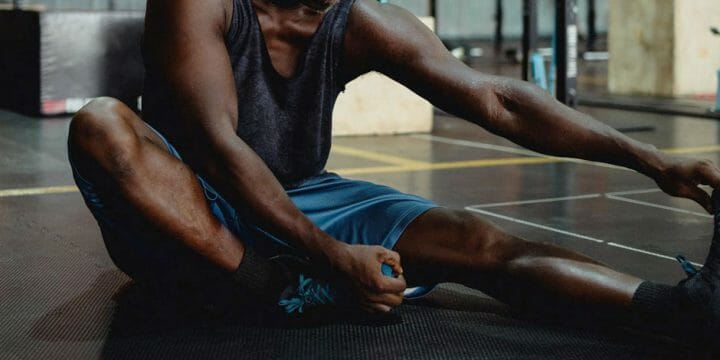


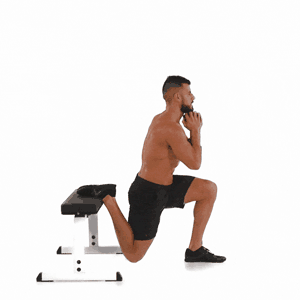 3. Bulgarian Squat
3. Bulgarian Squat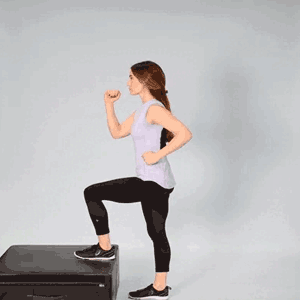 5. Step Ups
5. Step Ups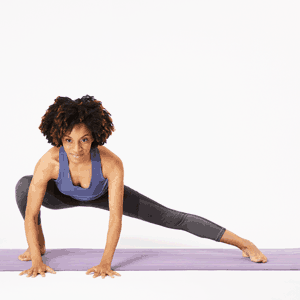 7. Side Lunge
7. Side Lunge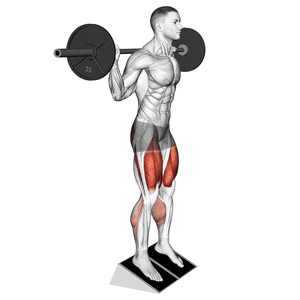 9. Heel-Elevated Squat
9. Heel-Elevated Squat